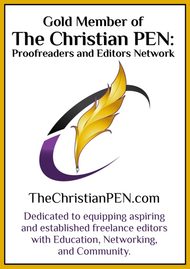Editing Specifics
Fiction content, also known as substantive, editing improves the big-picture issues of a story. This edit also tackles any deep-level restructuring that is needed to improve the flow of the story.
I help authors improve their storytelling so that the reader is engaged from beginning to end. I advise the author on everything from plot to character development and opening hooks to ending cliffhangers and on avoiding errors that fiction writers commonly make.
Together we ensure that active sentences hold the reader's attention, clichés are weeded out, internal dialogue is handled properly, and POV is used effectively. I work closely with the client to suggest improvements to the reader's experience.
Unlike content editing, which covers big-picture issues and deep-level restructuring, line editing refers to a unique edit that falls between copyediting and content editing in intensity.
I look at the manuscript line by line and analyze each paragraph and sentence, considering word choice (syntax) and the power and meaning of each sentence.
Through this service, I help authors develop their craft on a chapter-by-chapter basis. All of the above specifics of content and line editing are applied, and I am available to teach elements of fiction writing as needed.
Critiques of whole or partial manuscripts are available and would include an overall assessment of the story, including character development, plot, story arc, POV, use of dialogue and action, and opening hooks and cliffhangers.
Elements of Fiction
Christian fiction has elements of fiction that must be addressed in order to produce an excellent manuscript. Of course shorter works of fiction do not contain all of these elements.
Some of the fiction elements for novel-length manuscripts:
- novel formatting
- opening hooks and chapter ending hooks
- first chapter elements
- point of view (POV)
- proper dialogue, including tags and beats
- plot development and research, sub-plots
- character development and emotions
- setting
- information dumps
- showing vs. telling
- active vs. passive
- proper use of flashbacks or back story
- consistency in character traits and scene props
- preachiness in Christian novels
- overused words that mark the writer as a beginner to publishers and agents
- over-explanation that insults the reader
- floating body parts (FBPs)
- pet phrases and words and recycling words
- using em dashes and ellipses in dialogue and matching dialogue to the characters
- interior monologue and direct thoughts
- author intrusion
- goals, motivation and conflict (GMC) and how to apply it to fix “sagging middle syndrome”
- purple prose and stilted writing
- starting consecutive sentences with the same word
- too much step-by-step action
- foreshadowing, flash-forward, and red-herrings
- the five senses and beyond
- metaphors, mixed metaphors, and similes
- avoiding the “mirror” effect
- viewing scenes as mini-stories
- editing for writing style
- book title
- prologues and epilogues
- the proper ending



